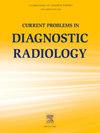改善门诊计算机断层扫描的可及性。
IF 1.5
Q3 RADIOLOGY, NUCLEAR MEDICINE & MEDICAL IMAGING
引用次数: 0
摘要
美国对影像诊断服务的需求持续上升,这给医疗系统保持高效的排班流程带来了挑战。本研究记录了我院为应对 2022 年期间门诊影像需求激增而采取的质量改进措施,该措施导致了明显的排期积压。到 2022 年 10 月,平均排期间隔(定义为从下单到预定检查日期的时间)从 2 周增加到 6 周。这一举措的目标是在 2023 年 1 月前将排期间隔从 6 周缩短至 10 天。利用排期人员、技术人员和放射科医生的反馈意见,实施了多项干预措施。每项干预措施的影响都通过控制图进行监控,每周跟踪预约延迟情况作为平衡措施。起初,为了解决积压问题,在 4 周内对检查时段进行了双预约,从而将排期间隔缩短至 12 天(减少了 72%)。随后,检查时段的持续时间从 20 分钟缩短至 15 分钟,并在所有站点统一了对比方案。在随后的 9 周内,这些调整进一步将间隔时间缩短至 7 天(减少了 41%)。虽然人员轮班调整对排班间隔没有影响,但额外引进的 CT 扫描仪却将间隔缩短至 3 天(缩短了 57%)。这些干预措施使检查量显著增加,从每周平均 722 次增加到 860 次(增加 19%),年收入约增加 161.2 万美元。重要的是,平均预约延迟时间没有变化,在研究期间保持在 15 分钟。这些改进在随后的几个月中得以持续,并得到了员工的积极反馈。虽然这一举措成功解决了整个医疗系统排班效率低下的问题,但检查量的增加也导致完成报告的周转时间延长。改进门诊排期流程的未来方向包括扩大在线排期平台、实施系统以评估成像的适当性,以及开发紧迫性分层以优先安排时间紧迫的检查。本文章由计算机程序翻译,如有差异,请以英文原文为准。
Improving access to outpatient computed tomography
Demand for diagnostic imaging services in the United States continues to rise, posing challenges for health systems to maintain efficient scheduling processes. This study documents a quality improvement initiative undertaken at our institution in response to a surge in demand for outpatient imaging during 2022, which led to a notable scheduling backlog. By October 2022, the average scheduling interval, defined as the time from order placement to scheduled examination date, had increased from 2 weeks to 6 weeks. The objective of this initiative was to reduce the scheduling interval from 6 weeks to 10 days by January 2023. Utilizing feedback from schedulers, technologists, and radiologists, several interventions were implemented. The impact of each intervention was monitored with a control chart with weekly appointment delays tracked as a balancing measure. Initially, examination slots were double-booked for a period of 4 weeks to address the backlog, resulting in a reduction of the scheduling interval to 12 days (72 % decrease). Subsequently, examination slot duration was shorted from 20 to 15 min and contrast protocols were standardized across all sites. These adjustments further decreased the interval to 7 days (41 % reduction) over the following 9 weeks. While staffing shift adjustments had no impact on the scheduling interval, the introduction of an extra CT scanner reduced the interval to 3 days (57 % decrease). These interventions resulted in a notable increase in examination volume, from a weekly average of 722 to 860 examinations (19 % increase), approximately an additional $1,612,000 in annual revenue. Importantly, there was no change in the average appointment delay, which remained at 15 min over the study period. These improvements were sustained across the subsequent months and received favorable subjective feedback from staff. While the initiative successfully addressed scheduling inefficiencies across our health system, the rise in examination volumes has led to an increased turnaround time for completed reports. Future directions for enhancing the outpatient scheduling process include expanding online scheduling platforms, implementing systems to assess imaging appropriateness, and developing urgency stratification to prioritize time-sensitive examinations.
求助全文
通过发布文献求助,成功后即可免费获取论文全文。
去求助
来源期刊

Current Problems in Diagnostic Radiology
RADIOLOGY, NUCLEAR MEDICINE & MEDICAL IMAGING-
CiteScore
3.00
自引率
0.00%
发文量
113
审稿时长
46 days
期刊介绍:
Current Problems in Diagnostic Radiology covers important and controversial topics in radiology. Each issue presents important viewpoints from leading radiologists. High-quality reproductions of radiographs, CT scans, MR images, and sonograms clearly depict what is being described in each article. Also included are valuable updates relevant to other areas of practice, such as medical-legal issues or archiving systems. With new multi-topic format and image-intensive style, Current Problems in Diagnostic Radiology offers an outstanding, time-saving investigation into current topics most relevant to radiologists.
 求助内容:
求助内容: 应助结果提醒方式:
应助结果提醒方式:


